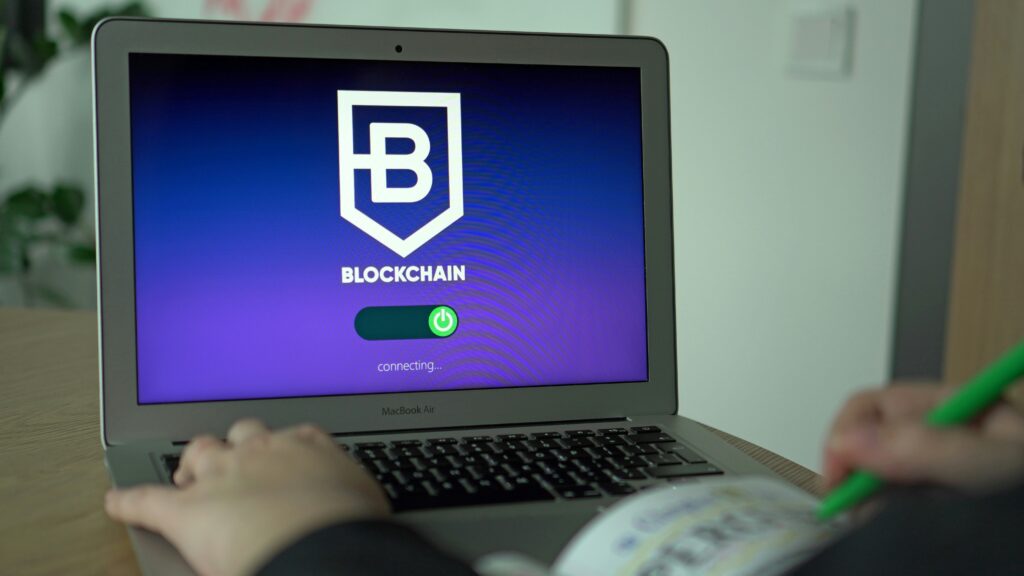What Blockchain Really Is (And Why It Matters)
Understanding Blockchain: Beyond the Buzz
Blockchain is a type of distributed ledger technology that stores information across a network of computers. Each new piece of data, or “block,” links to the one before it, forming a secure and tamper-resistant chain.
At its core, blockchain is:
- Decentralized: It operates without a central authority.
- Transparent: Transactions are recorded in a way that is visible and verifiable by all users.
- Immutable: Once data is recorded, it cannot be altered without consensus from the network.
This architecture makes blockchain especially ideal for scenarios where trust and accountability are essential.
It’s Not Just About Cryptocurrency
While blockchain is best known for powering cryptocurrencies like Bitcoin and Ethereum, its potential stretches far beyond finance. This technology is the backbone of a growing number of decentralized applications (dApps) that serve different industries.
Real use cases extend to:
- Supply chain tracking: From verifying sustainable sourcing to reducing fraud in shipping.
- Identity verification: Guaranteeing secure and user-controlled personal identity systems.
- Smart contracts: Enabling automated, self-executing agreements without intermediaries.
Real-World Problems Blockchain is Solving
Blockchain is moving out of the experimentation phase and into practical, everyday use. Some current applications include:
- Food safety: Companies like Walmart are using blockchain to trace food back to its source in seconds, helping prevent outbreaks and contamination.
- Healthcare data security: Encrypted blockchain records give patients control over their medical data and protect against data breaches.
- Voting integrity: Pilot projects are using blockchain to create tamper-proof digital voting systems.
These examples show that blockchain is not just a trend but a foundational technology with real-world impact.
As creators, technologists, and businesses explore this space, understanding blockchain’s potential is key to staying ahead.
Blockchain isn’t just for crypto nerds anymore. It’s earning a spot in supply chains across industries by doing one thing really well: tracking stuff. From the moment a product is made to the second it hits the shelf, blockchain can log each step in a tamper-proof digital ledger.
Take food safety for example. A lettuce shipment gets contaminated. With blockchain, retailers trace it back in seconds, not weeks, to the exact farm and batch. In fashion, brands are using it to prove that high-end shoes or jackets really are ethically sourced and not cheap knockoffs. And in electronics, it helps verify whether a part is legit before it ends up in your laptop or phone.
For consumers, that means something simple: trust. You can scan a QR code and see the full journey of your purchase. For businesses, it’s about speed and accountability. Errors get caught faster. Fraud is harder to pull off. Everyone down the line works with the same set of facts.
No middleman. Less guesswork. More transparency all around.
NFTs and Blockchain: Protecting Creative Work in the Digital Age
Digital creators are no longer just concerned with producing content—they now have to safeguard their work in a world where copying and redistribution is easy and often unavoidable. Enter blockchain technology. In 2024, it’s becoming a powerful tool for ownership, authenticity, and creative protection.
Provenance and Ownership Through Blockchain
Blockchain serves as a decentralized ledger that certifies the origin and history of digital assets. For creators, this means:
- Your work has a timestamped record that proves you made it
- Ownership transfers can be tracked transparently
- Any version or duplication that doesn’t match the original record is easily identifiable
This approach offers peace of mind and new ways to assert legal claims in disputes over originality.
NFTs: Legal Proof, Not Just Hype
The mainstream conversation around NFTs has shifted. No longer seen purely as trendy collectibles or overpriced art, NFTs (non-fungible tokens) are now recognized as:
- Digital certificates of authenticity
- Legally usable proofs of ownership
- Unique licenses embedded directly into the asset
What matters is the metadata, not just the artwork. NFTs allow creators to attach royalties, terms of use, and even smart contracts that execute automatically on resale.
Emerging Tools That Empower Creators
As awareness grows, so do the tools available to everyday creators and small businesses. Platforms once limited to crypto-natives are now built for artists, musicians, designers, and creators across disciplines:
- Minting platforms like Zora, Manifold, and Objkt make customization easy
- Marketplace options allow creators to stay in control—no gatekeepers, no galleries
- Digital wallets like Rainbow or Phantom are becoming more user-friendly for newcomers
These tools aren’t just for collecting—they’re designed to build infrastructure around your creative business.
Why This Matters in 2024
In a saturated creator economy, originality needs protection. Blockchain and NFTs aren’t silver bullets, but they offer new ways to:
- Prove authorship
- Create scarcity and value
- Secure your rights without waiting on legacy legal systems
Creators who explore these tools early place themselves ahead of the curve—where their work is not just seen, but respected and safeguarded.
Blockchain tech isn’t just for crypto anymore. It’s stepping into real-world problems like digital identity and data privacy. With centralized databases constantly getting breached, decentralized systems are getting serious attention. Blockchain offers tamper-proof, user-controlled ID options that are harder to compromise.
Take voting, for example. Blockchain-based platforms can help verify voter identity while keeping ballots secure and anonymous. In healthcare, digital health records on a blockchain can give individuals control over who sees their data—without relying on a single institution to keep it safe.
Decentralized ID matters because it puts the user back at the center. No middlemen. No single point of failure. In a world that keeps leaking personal data, that shift makes a difference. Privacy isn’t just a feature anymore. It’s a necessity.
Barriers to Wider Adoption
As blockchain and decentralized technologies continue to grow, several challenges stand in the way of mainstream adoption. While innovation is accelerating, adoption remains uneven due to legal, technical, and educational roadblocks.
Regulation Gaps
Governments around the world are still playing catch-up when it comes to blockchain regulation. The lack of clear and unified guidelines creates uncertainty for both creators and users.
- Legal definitions of crypto assets and blockchain services vary by country
- Startups and creators face compliance challenges in cross-border transactions
- The absence of regulatory clarity can deter potential investors and partners
Scalability and Energy Usage
Despite advancements, scalability continues to be a concern. Many blockchain platforms struggle to support large-scale activity without performance issues.
- High transaction fees during network congestion
- Slow processing speeds for certain blockchains
- Significant energy consumption, especially for proof-of-work systems
The move toward more efficient consensus mechanisms, like proof-of-stake, is helping reduce energy impact, but the industry is still evolving.
Public Perception and Education
One of the most persistent hurdles is public understanding. Misconceptions about blockchain, crypto, and decentralization are widespread.
- Confusion between blockchain technology and cryptocurrency speculation
- Lack of accessible educational resources for non-technical users
- Media focus on scams and volatility shapes negative narratives
To overcome this, creators and platforms must invest in education and transparency. Building trust through clear messaging and real-world applications will be essential for broader adoption.
Smart contracts are self-executing code stored on a blockchain. They function like digital agreements: once conditions are met, they carry out actions automatically. No middleman. No delays. No room for misinterpretation. Trust gets built into the system through transparency and automation.
Use cases keep expanding. In real estate, smart contracts handle escrow and title transfers without waiting on paperwork or third parties. Legal agreements can go live as code, triggering payments or penalties as terms are met or missed. In logistics, smart contracts sync up supply chains—tracking shipments and releasing payments once goods arrive.
The bigger picture: smart contracts shave off time, fees, and friction. By cutting out intermediaries, they boost efficiency without giving up security. For everyday users and businesses alike, that’s a serious upgrade.
Blockchain Is Quietly Reshaping Industries
Beyond the Hype
Blockchain has evolved past the buzzword phase. While headlines may focus on speculative coin prices or volatile markets, the real story is unfolding behind the scenes. Instead of flash and hype, we’re seeing backend solutions that are quietly improving how industries operate.
Many of these programs now focus on practical, tool-based learning – teaching participants how to automate workflows, manage digital assets, and even generate QR codes for product tracking, event access, training materials, and customer-facing operations.
From Trend to Infrastructure
Many sectors are moving from blockchain experiments to real integrations. The technology is becoming a foundational layer in digital systems, even if users never directly interact with it.
- Supply Chain: Transparent tracking from origin to delivery is increasing trust and accountability.
- Healthcare: Secure patient data handling and improved interoperability are emerging use cases.
- Finance: Decentralized finance (DeFi) tools are pushing traditional institutions to innovate beyond legacy systems.
- Real Estate: Blockchain is beginning to power contract management and property transaction transparency.
What to Watch
For creators and entrepreneurs, the smart move is to follow what’s actually being built, not just what’s being traded. True adoption can be seen in working pilots and growing use cases, not the day-to-day fluctuations of crypto markets.
Key Advice:
- Pay attention to blockchain pilots being implemented in major sectors.
- Track partnerships between Web2 companies and blockchain tech.
- Separate infrastructure growth from crypto speculation.
Blockchain’s future lies less in hype and more in real-world impact. Watching the underlying developments will help you spot opportunities before they hit the mainstream.
Blockchain is doing more than moving crypto these days. In the energy world, it’s shaking up how power changes hands. Peer-to-peer energy trading lets homeowners with solar panels sell excess electricity directly to neighbors. No need for a middleman utility company. It’s faster, often cheaper, and built for the kind of transparency traditional grids can’t handle.
This tech also supports grid optimization. It tracks who produces what, when, and how it’s used. That kind of detail helps cities balance supply and demand on the fly. In the big picture, it opens the door to more accurate carbon credit systems—no theory, just hard data.
Smart cities and forward-thinking energy groups are leading the charge. They’re testing blockchain-fueled microgrids, where neighborhoods run semi-autonomously from the main grid. It’s local power with global potential.
(For a parallel track, check out how similar blockchain integration is appearing in home tech: How Smart Home Tech Is Enhancing Daily Life)


 Lorissa Ollvain is a tech author and co-founder of gfxrobotection with expertise in AI, digital protection, and smart technology solutions. She is dedicated to making advanced technology accessible through informative, user-focused content.
Lorissa Ollvain is a tech author and co-founder of gfxrobotection with expertise in AI, digital protection, and smart technology solutions. She is dedicated to making advanced technology accessible through informative, user-focused content.

